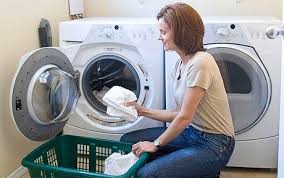GCSE Standard Questions: Electricity in the Home
Q1. A washing machine has an electric motor and an electric heater.

The resistance of the heater is 22 Ω. The mains voltage is 230 V.
(a)
(i) State the equation linking voltage, current and resistance.
(1 mark)
(ii) Show that the current in the heater is about 10 A when it is working.
(2 marks)
(b) The washing machine is fitted with a fuse rated at 13 A.
(i) Explain why the washing machine is fitted with a fuse.
(2 marks)
(ii) When the motor is working, the current in it is 1.74 A. Explain why it would not be sensible to replace the 13 A fuse with a 2 A fuse.
(2 marks)
(Total 7 marks)

Q2.
A student uses a hair dryer. The hair dryer's plug contains a fuse. The diagram below shows the fuse.

(a) Explain how the fuse prevents too large a current in the hair dryer.
(2 marks)
(b) The hair dryer is rated at 240 V, 1500W. Calculate the current rating in amps of the hair dryer.
(4 marks)
(c) The fuse in the hair dryer blows and the student has to replace it. The following fuses are available:
1A, 3A, 5A and 13A
(i) Which fuse should the student use?
(1 mark)
(ii) Explain your choice.
(1 mark)
(d) A hair dryer heats up air. Name one other example of electrical heating used in the home.
(1 mark)
(Total 9 marks)







